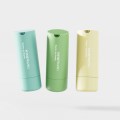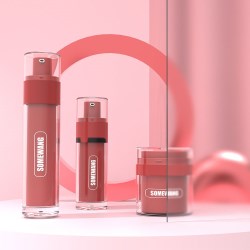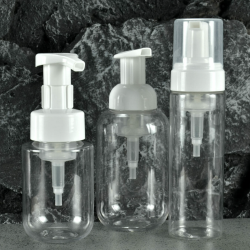Public
Somewang Packaging Catalog
Somewang Packaging Events & News
Somewang Packaging Gallery
Somewang Packaging Locations
Somewang Packaging PDF Downloads
Somewang Packaging Videos
If this is your company, CONTACT US to activate Packbase™ software to build your portal.


Soap dispenser pumps are common in homes, offices, and public restrooms, making handwashing more convenient and efficient. These devices work using a simple but effective mechanism that allows the user to dispense the right amount of soap with a single push.
Understanding soap dispenser pump mechanisms and how soap dispenser pumps work not only helps in the proper maintenance of these devices but also in choosing the right one for your needs. The main components include the pump head, dip tube, piston, and spring. Learning the role each component plays in the pumping process can help you better appreciate this everyday item we often take for granted.
How to Choose the Best Soap Dispenser
When selecting the perfect soap dispenser for your home, it’s essential to consider several factors to ensure that it fits your preferences and requirements.
First, consider the type of pump used in the soap dispenser. Typically, there are push pumps and screw pumps available in the market. A push pump may be more suitable for a sleek, modern dispenser, whereas a screw pump might suit a traditional dispenser better.
Next, consider the housing of the dispenser. For long-lasting use, it should be made of sturdy and high-quality materials, such as stainless steel, glass, or plastic. Remember the stem, which connects the pump to the soap reservoir. Look for a dispenser with a durable stem that can handle constant pressing without breaking or malfunctioning over time.
The actuator is another essential component to pay attention to, as it is the top part of the pump pressed to dispense the soap. Ensure the actuator is comfortable to press and easy to clean if necessary. In terms of design, the dispenser lid is something to note. It should fit tightly to prevent soap leakage when dispensing. Also, it should be easy to remove for refilling and maintenance purposes.

How Does a Pump Work?
A soap dispenser pump is a simple and effective mechanism that allows you to dispense product easily. To understand how it works, it’s helpful to know its key components, including its mechanism, valve, and pressure.
When you press down on the pump, a small piston, one of the pump components inside the dispenser, moves, creating a vacuum. This vacuum sucks up the soap from the container and fills the pump chamber. Meanwhile, the downward motion of the piston puts pressure on a spring, moving a small ball upward and taking some soap product with it.
Upon releasing the pump, the piston moves back upwards, and the pressure within the chamber forces the ball to return to its original position. This causes the soap to be dispensed through the nozzle. The valve plays a crucial role in this process, returning to its sealing position to prevent liquid soap from flowing back into the bottle.
The combination of these components working together allows the pump to function efficiently and consistently. Each time you press it, the process is repeated, ensuring the right amount of soap is dispensed for your needs.
Keep in mind that proper maintenance is essential for the smooth operation of your pump. Over time, soap residues may build up and cause the dispenser to clog or malfunction. To prevent this, regularly clean the mechanism to ensure the parts are free from residue or buildup.
Types of Soap Used in Dispensers: Liquid and Foam
Regarding manual soap dispensers, you have two main options for the type of soap to use: liquid and foam. Both types serve the purpose of cleaning and sanitizing your hands, but they have some differences.
- Liquid soap is the more traditional option; it typically comes in a viscous form. Dispensers designed for liquid soap usually have a mechanism that, when pressed, releases the soap onto your hands. One of the advantages of using liquid soap is that it tends to be more cost-effective, as it is generally available in larger quantities. Also, you can use it in automatic soap dispensers.
- On the other hand, foam soap starts as a liquid soap and is then aerated in the dispenser pump to create a foam consistency. When you place your hand under the dispenser, the foam soap is released onto your hands for you to lather and wash. Foam soap is a more environmentally friendly option, as it requires less water to rinse off and often uses less soap per pump than liquid soap.

Order Bulk Plastic Dispensing Bottles from Us
We supply the best dispensing bottles for liquid soap and other cosmetics. You can order in bulk, and we will deliver to your warehouse anywhere in the world. Please send us a message via the customer contact number on the website to order.





.jpg)



















.jpg)




















